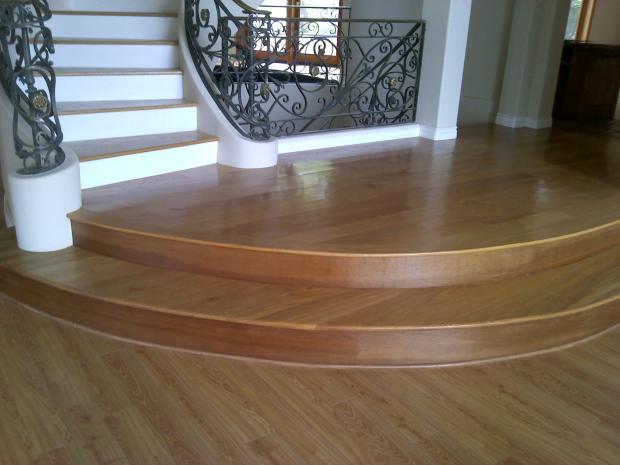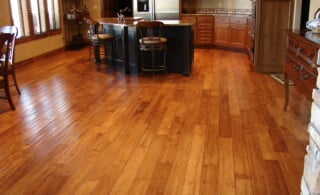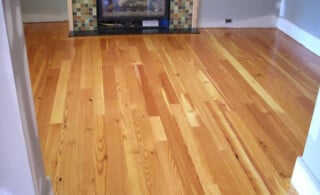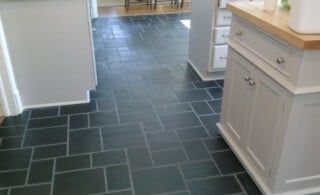
Deciding between prefinished or unfinished wood flooring can be difficult for any homeowner. Certainly, there’s something to be said for each installation option. You may feel exhausted by the number of decisions you need to make your hardwood flooring project, but taking the time to choose the option that’s best for you will save a lot of future headaches. Proper planning and preparation before a flooring contractor begins the project is the best way to make sure the project goes smoothly and you get the final result you deserve from your time and money.
The Advantages of Prefinished Wood Flooring
Prefinished wood flooring is the best avenue when hardwood prices, installation cost and convenience are major factors for your flooring project. Prefinished floors means less mess, which has obvious advantages, especially if you have children or pets that you don’t want exposed to fumes and other installation by-products. Prefinished wood can save you money because applying the finish at the factory reduces labor costs. It may not have as much of an effect on the overall cost, as say the species of wood you select, but you’ll definitely notice the difference. For all these reasons, prefinished wood flooring is also the obvious choice for flooring upgrades in existing homes.
The process of prefinishing a wood floor also results in a more durable finish, making it a wise choice for kitchens and other high traffic areas. This durability is especially important in subground or high humidity areas of your home. In fact, if you’re planning on installing your hardwood flooring below ground level, you should probably opt for prefinished engineered wood flooring to help the floor withstand the harsher conditions.
The Advantages of Unfinished Wood Flooring
So what’s left that unfinished wood flooring has to offer? Well, some homeowners may already have some hardwood flooring in their home, and they’re adding more hardwood flooring to an adjacent area where creating a match is important. Unfinished wood is the way to go to create the closest possible match. Likewise, installing hardwood flooring throughout the home is usually best with unfinished flooring to provide a uniform color and finish. Unfinished wood flooring will also give a greater range of overall options. Specific plank widths or unusual wood species may not be available in prefinished wood. If your home has historical significance or unique architectural style, this versatility may be critical in creating the right look in your hardwood flooring.
Talk to a Flooring Contractor
The flooring installer is an often untapped resource for homeowners. Talking to a flooring contractor can help you reach a decision with greater ease and confidence. Ask his or her advice concerning the different types of wood flooring, and ask the professional to bring samples of the different finishes and wood types. This will allow you to see them with the lighting in your home and with your furnishings. Writing down the names of woods and finishes you like in friend’s houses and magazines will help the flooring contractor give you an accurate estimate for products and installation.
 Cypress and Hickory Wood Flooring
Cypress and Hickory Wood Flooring  How to Hide Pesky Carpet Seams
How to Hide Pesky Carpet Seams  Divine Pine Flooring
Divine Pine Flooring  Slate Floors Make for a Great Decor
Slate Floors Make for a Great Decor  Flooring Ideas for Your Home Gym
Flooring Ideas for Your Home Gym 

Are You Familiar With This Topic? Share Your Experience.